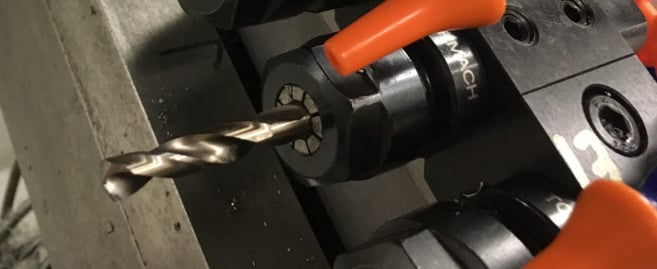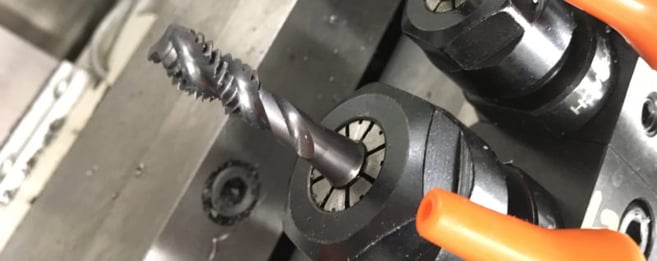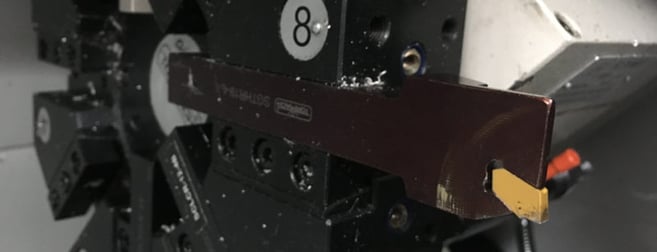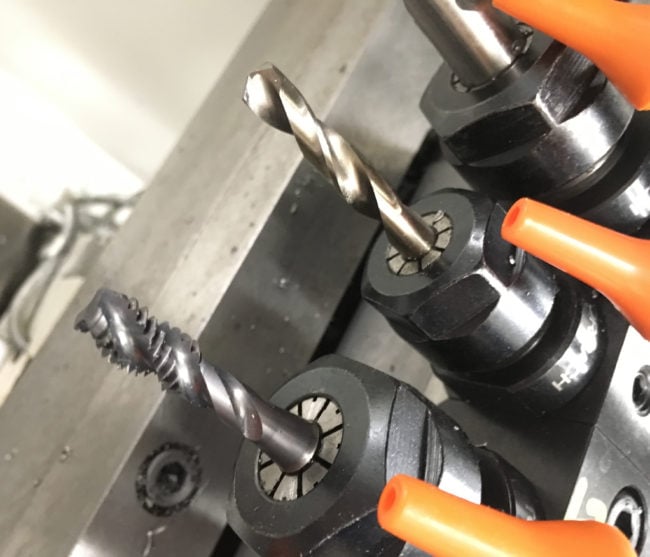Understanding lathe tooling, what it does and how it works is a big part of refining finishings and maximizing tool wear and tear. There are a lot of options, so it can seem confusing, but it really isn’t once you understand the basics.
There are five types of lathe tooling: External turning tools, boring bars, drills, threading tools, and parting tools. First, let’s talk about external turning tools. They are great at just what the name implies, cutting away the exterior of your piece. This include roughing or finishing work. Second on our list was boring bars. You can recognize these by their circular, bar design. They come in a bunch of different sizes, with one main purpose – to make an already existing hole bigger or to refine the finish of hole.

To make that initial hole, you’re going to need a drill. If you’re new to lathe work, you can picture this as a power tool drill, but instead of the machine spinning the cutting tool into the workpiece, it’s the exact opposite. The workpiece is moving really fast and the drill is secured in a stationary position. The holes boring bars make have a rougher finish, but if you’re going to thread it later on, that’s perfect.

Threading tools can add threads to both the interior and exterior of your workpiece. For instance, if you need to make a workpiece that you can thread a screw into, you can use internal threading tools after pre-drilling the hole. If you want to make the screw with threads, you can also do that with external threading tools. You’ll make to make sure in both cases your CAD and CAM programs include a threading operation before you press go.

Lastly – we have parting tools. Parting tools are also very important, and do much more than their name implies. These tools can part, groove, and cut off workpieces while offering a consistent, smooth finish. This is what you’ll be using a lot of if you’re doing detailed exterior work.

You might also hear about left hand, right hand and neutral hand tooling. That describes how the cutting tool faces the workpiece and what direction your lathe is spinning he work piece. Normally our lathe will be spinning clockwise. It’s easy to differentiate the left handed tools from right handed tools, because if you lay the tools with the insert up, left handed tools curve to the right, and right handed tools curve into the left, kind of like your finders do if you make ‘c’s with them. This is also always included in the lathe tooling designation, which you can find engraved into the side of your tool. If you still have some un answered questions about what tool’s best to use in different situations, we just started hosting a Lathe Fundamentals Workshop, where you could learn about everything from lathe methods, workholding, and tooling and insert selection. Look in the comments for that link, and we’d love to talk lathe tooling with you in the comments!


